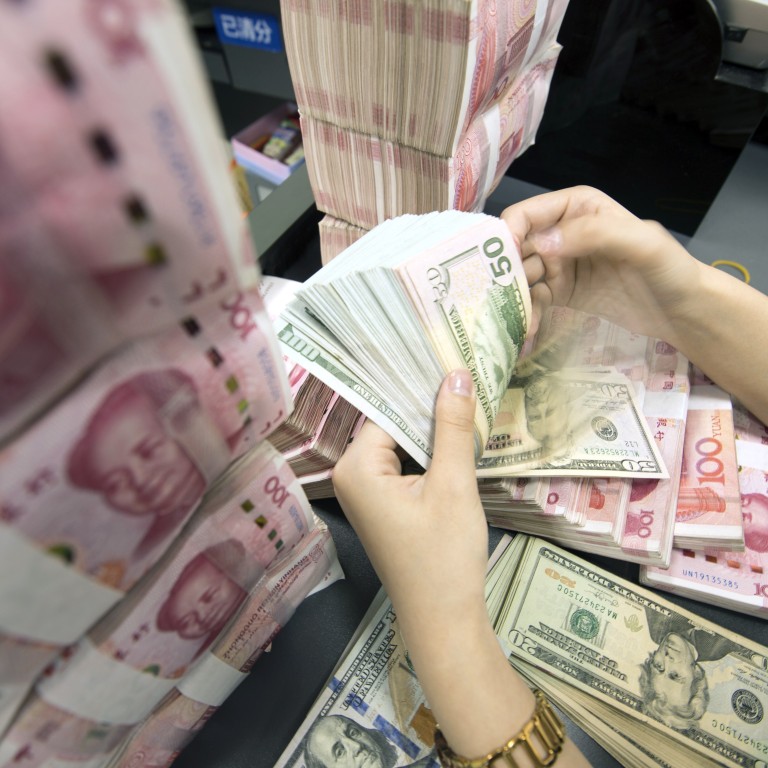
China’s currency is poised for its worst month on record after weakening beyond the barrier of 7 yuan per US dollar
- The Chinese currency has plummeted 3.9 per cent this month, the biggest loss since January 1994, when the modern exchange rate regime was adopted
- The slump past the 7 level for the first time since the financial crisis comes as US-China trade tensions escalate
China’s yuan is headed for a record monthly plunge as an intensifying trade war with the US damages investor confidence.
Without any clear signs of progress in trade negotiations, the “outlook will deteriorate, both for the Chinese economy and markets,” Dariusz Kowalczyk, senior emerging market strategist at Credit Agricole, wrote in a note dated Monday. The yuan may decline in the near term to 7.3 per dollar, he said.
Yuan slides to fresh 11-year low, sparking fears of Asian capital flight
The yuan plunged to the weakest level since February 2008 this week after President Donald Trump and the Chinese government exchanged tariff threats on Friday.
The PBOC may allow the currency to slide to 7.5 by the end of this year as it uses depreciation to counter the tariffs, Bank of America Merrill Lynch strategists led by Claudio Piron wrote in a note. The currency slipped 0.14 per cent to 7.1621 a dollar as of 11:55am in Shanghai.
The yuan’s 14-day relative strength against the dollar has fallen below 30, reflecting strong selling momentum. The index has dipped below this level for 14 days in August, the most in a month since May.
Not only has the yuan weakened against the US dollar, it’s also at a record low against a basket of its peers. The Bloomberg replica of the CFETS RMB Index – which tracks the yuan against the currencies of 24 trading partners – has fallen to 91.1, the lowest level since the gauge was introduced in 2015.
The offshore yuan’s forward points, a gauge of liquidity and bearish bets on the currency, jumped to the highest level since October last week. The forward curve could rise, as a tumbling yuan prompts more Chinese companies to buy foreign exchange and as Beijing tightens liquidity to squeeze short sellers, Citigroup strategists led by Sun Lu wrote in a note.
Still, the PBOC can rein in depreciation if it wants. On Tuesday, the central bank set its daily fixing 204 pips stronger than the level that analysts and traders projected in a Bloomberg survey. That is the largest such bias since June.
To beat back bears, Beijing can also issue verbal warnings, sell bills in Hong Kong to boost the cost of shorting and directly intervene by dumping the US dollar.

